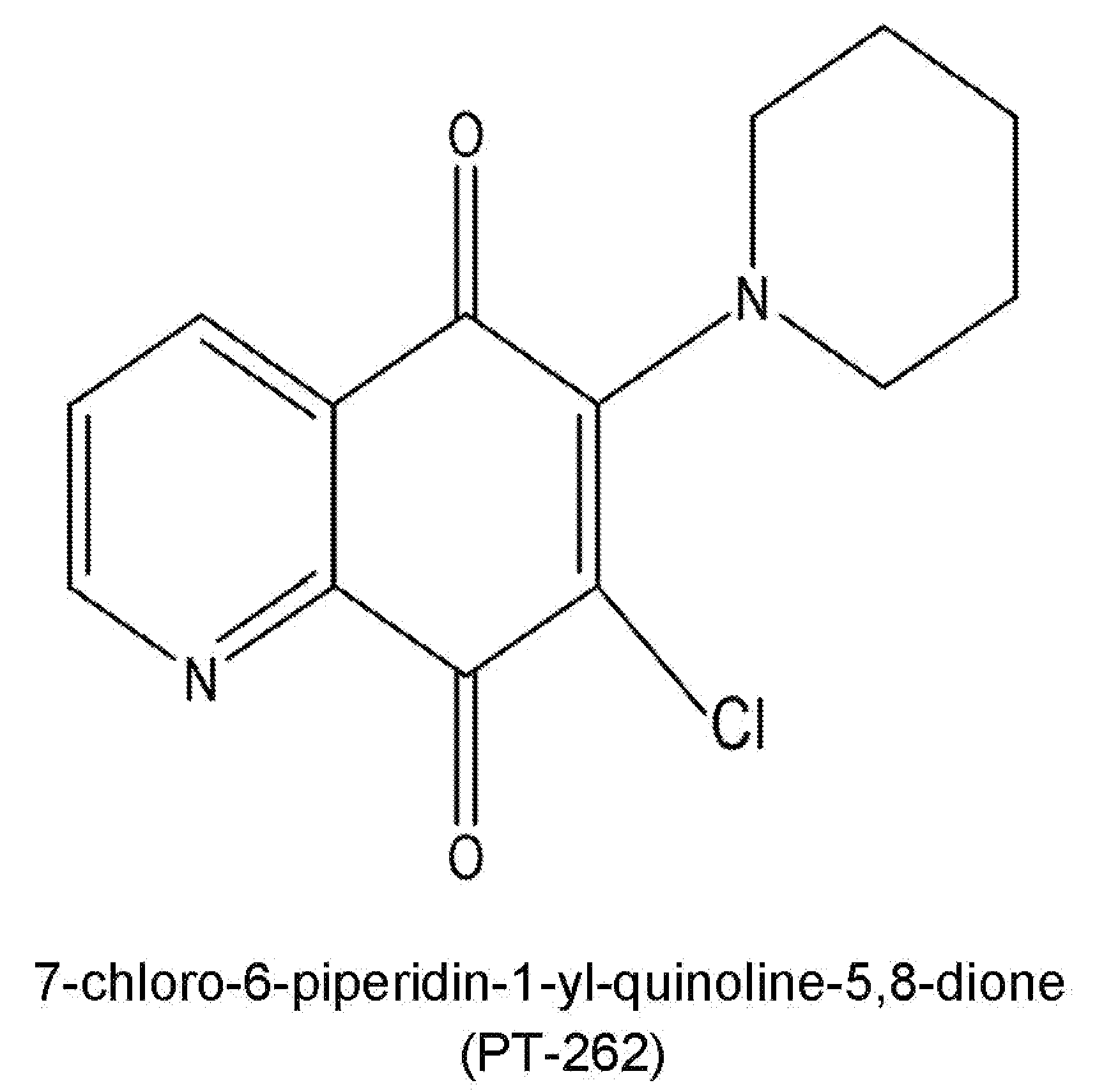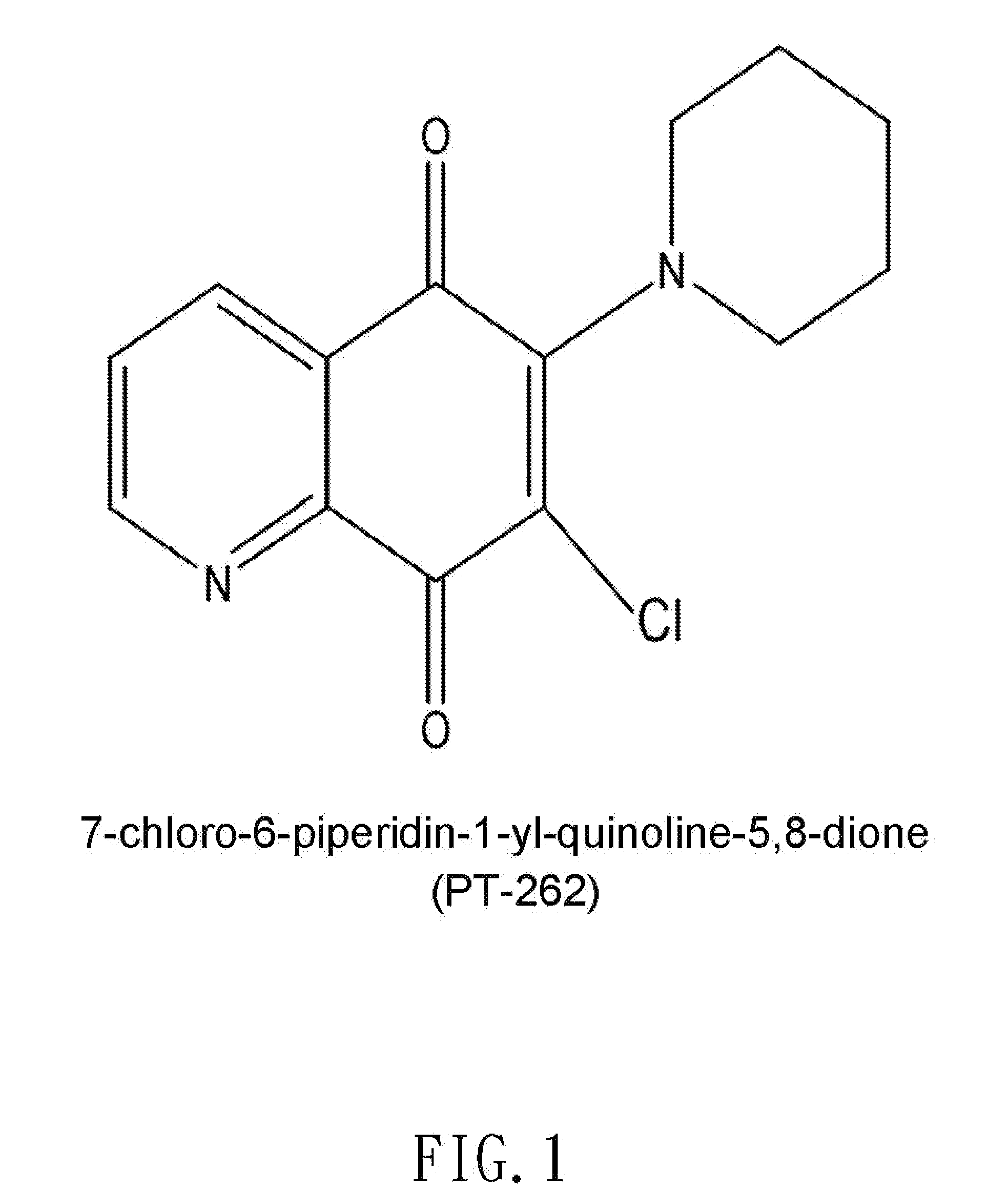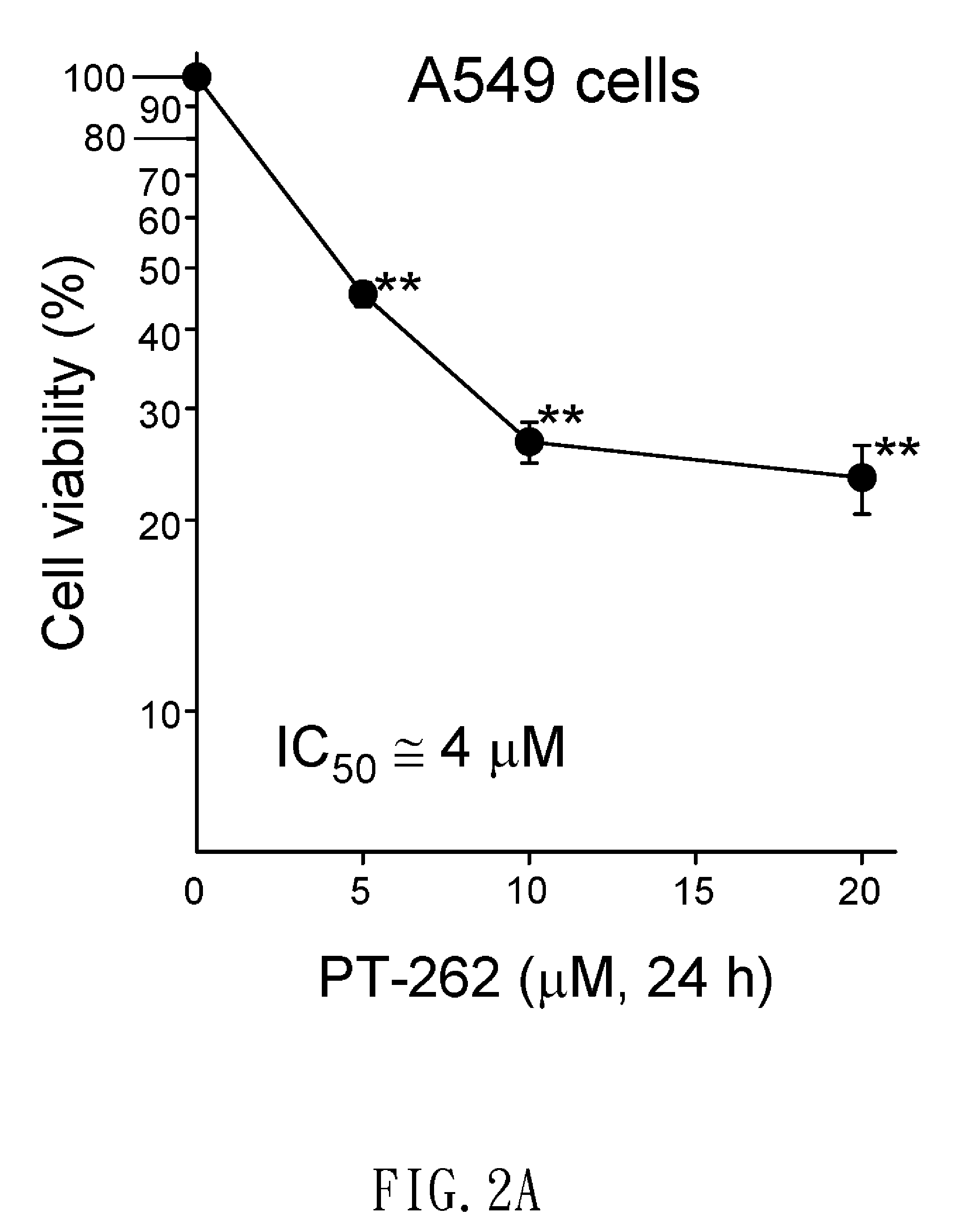Use of a Compound in Obtaining Cytoskeleton Blockage and Cell Elongation
a technology of cytoskeleton blockage and cell elongation, which is applied in the direction of heterocyclic compound active ingredients, biocide, drug compositions, etc., can solve the problems of poor diet habits, poor cytoskeleton function, and risk factors of cancer, and achieve the effects of reducing the risk of cancer
- Summary
- Abstract
- Description
- Claims
- Application Information
AI Technical Summary
Benefits of technology
Problems solved by technology
Method used
Image
Examples
Embodiment Construction
[0039]The present invention will be more clear from the following description when viewed together with the accompanying drawings, which show, for purpose of illustrations only, the preferred embodiment in accordance with the present invention.
[0040]The cell culture of PT-262, the experimental procedures, and the experiment results are described in conjunction with the accompanying drawings.
[0041]Cell Culture
[0042]The A549 cell line was derived from lung carcinoma of a 58-year-old male. The H1299 cell line has a homozygous deletion of the P53 gene that was derived from a non-small cell lung adenocarcinoma tumor. MCF-7 cell line was derived from breast adenocarcinoma of a 69-year-old Caucasian female. Hela cell line was derived from cervical carcinoma of a 31-year-old female. These cell lines are cultured in RPMI-1640 medium supplemented with 10% fetal bovine serum, 100 units / ml penicillin, 100 ug / ml streptomycin, and L-glutamine (0.03%, w / v), and cells were incubated at 37° C. and 5...
PUM
| Property | Measurement | Unit |
|---|---|---|
| temperature | aaaaa | aaaaa |
| cell length | aaaaa | aaaaa |
| cell length | aaaaa | aaaaa |
Abstract
Description
Claims
Application Information
 Login to View More
Login to View More - R&D
- Intellectual Property
- Life Sciences
- Materials
- Tech Scout
- Unparalleled Data Quality
- Higher Quality Content
- 60% Fewer Hallucinations
Browse by: Latest US Patents, China's latest patents, Technical Efficacy Thesaurus, Application Domain, Technology Topic, Popular Technical Reports.
© 2025 PatSnap. All rights reserved.Legal|Privacy policy|Modern Slavery Act Transparency Statement|Sitemap|About US| Contact US: help@patsnap.com



